The Fretboard
We decided to try to use some Rock Hard Water Putty to create the frets and markers on the fretboard. The label on this stuff looks like they haven't changed it since the 1800's, but it is still available, and is great stuff! We started by cutting three 1/4" thick pieces of mahogany about 3" wide. One of these to be used for a test run of the Water Putty plan. One special feature of these guitars is that the piece of mahogany we used for the fretboards is from a scrap that we inherited from my grandfather's shop quite a few years ago after he passed away. He loved to tinker and build things in his basement shop in his spare time, and he would have loved to see this project come together.
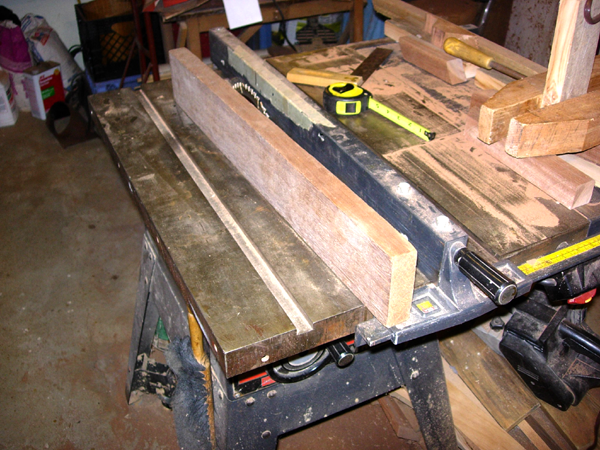
Piece of mahogany for the fretboards from my granddad's shop
For the test, we cut the fret slots using a table saw with a mitre guage, and drilled the marker holes using a forester bit in the drill press.
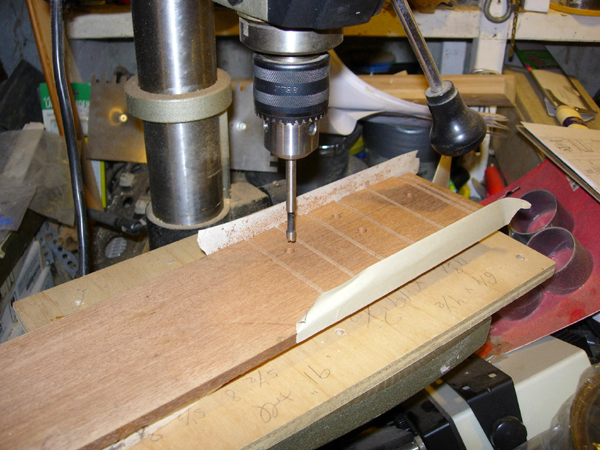
Drilling the marker holes on the test piece
We then slathered the test board with the Rock Hard Water Putty, and set it aside to dry (this stuff tends to shrink a bit when drying, so we used a good thick layer).
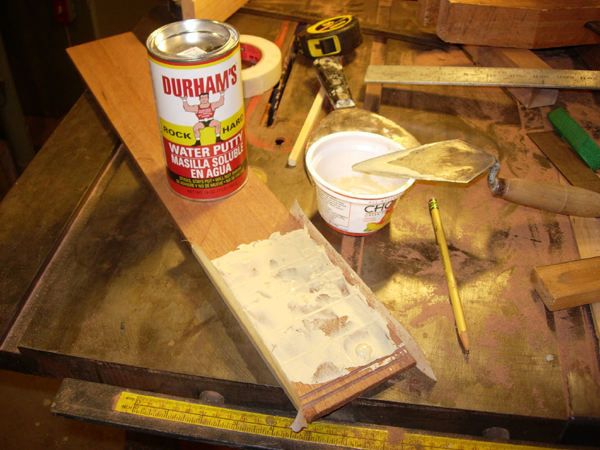
Application of Water Putty on the test board
After sanding off the excess putty with a belt sander, we decided that this was going to work just fine (close enough for folk music, as they say)
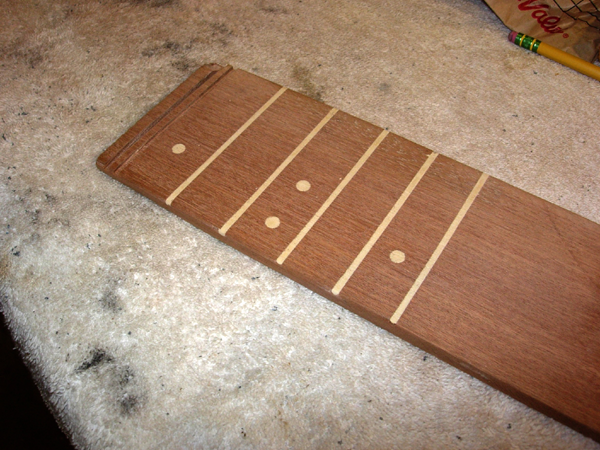
Test fretboard
We then cut the fret slots on the actual fretboards using the same table saw method. We taped the full scale drawing of the fretboard from the .pdf plans onto the back side of the fretboards, and used it as a visual guide for the fret spacing while cutting them on the table saw. Remember, this is a slide guitar with no actual frets - they are just there for a visual reference, so extreme accuracy is not required here.
However, while drilling the marker holes, we realized that the 1/4" drill I was using was going to be a problem up between the higher frets, as the frets were too close together. We were worried that the fretboard would chip if the holes were drilled too close to the fret slots, even with a smaller drill. We decided to drill the small holes after the fret slots were filled with putty, to stabilize the slots. So, after cutting the fret slots, we only drilled the larger holes before applying the first layer of Water Putty.
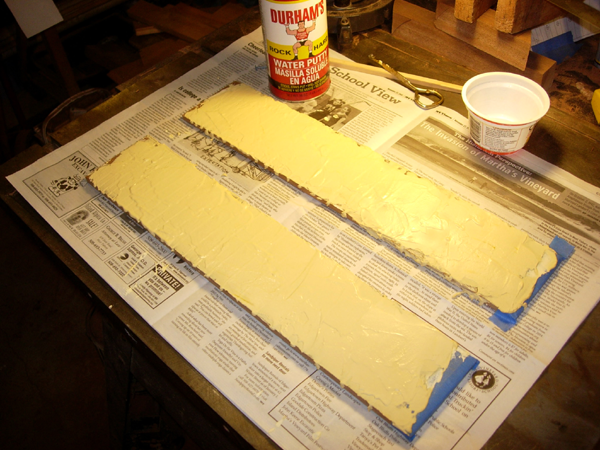
Thick layer of Water Putty on fretboards
After sanding the bulk of the Water Putty off of the fretboards, we then carefully drilled the small marker holes. This ended up working well, as the putty in the fret slots stabilized the mahagony enough to prevent chiping.
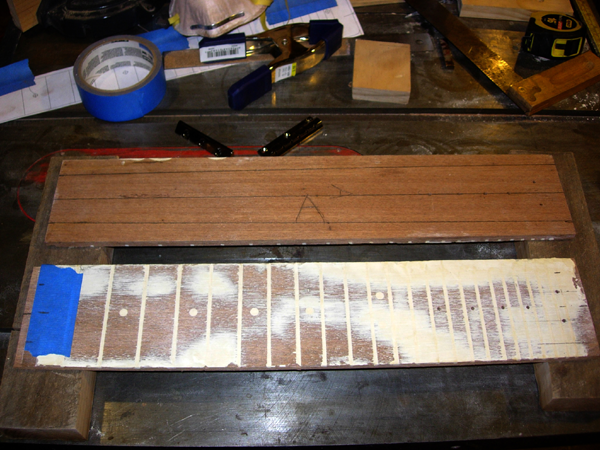
Drilling the smaller marker holes
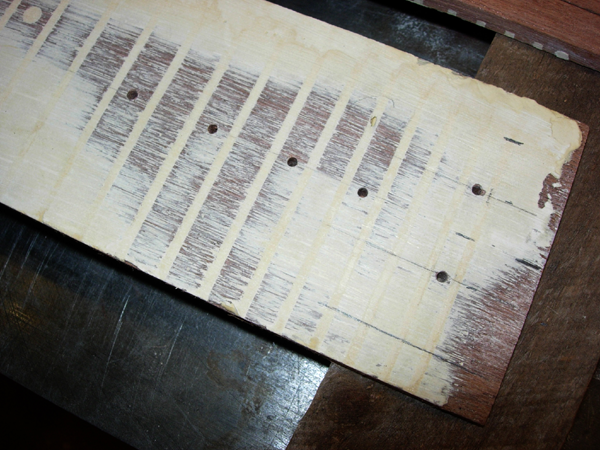
The smaller marker holes
After filling these with Water Putty and waiting for them to dry, we sanded the fretboards with the belt sander once more, and ended up with two pretty nice looking fretboards!
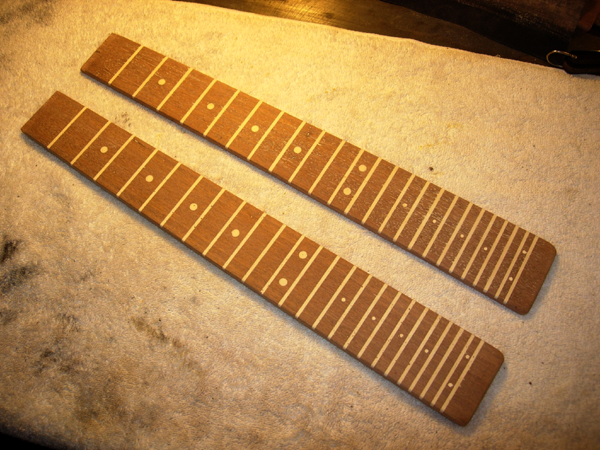
The final fretboards!
Now, back to the body to rout out the control and pickup cavities!


